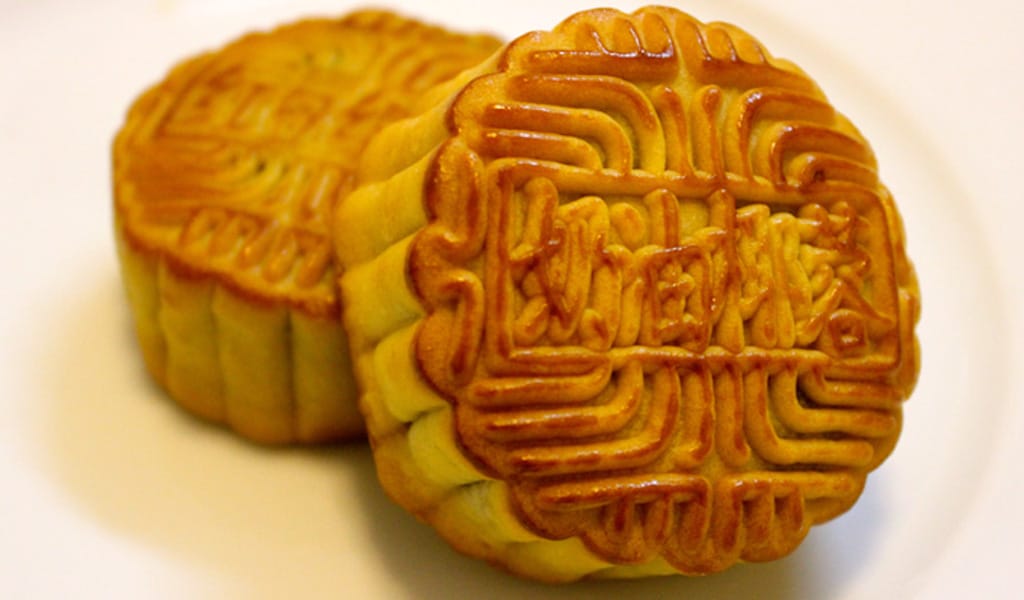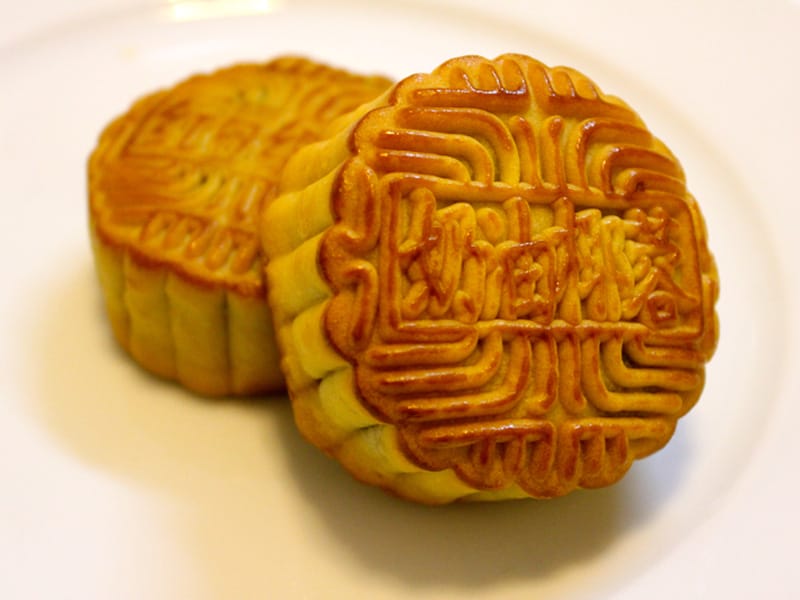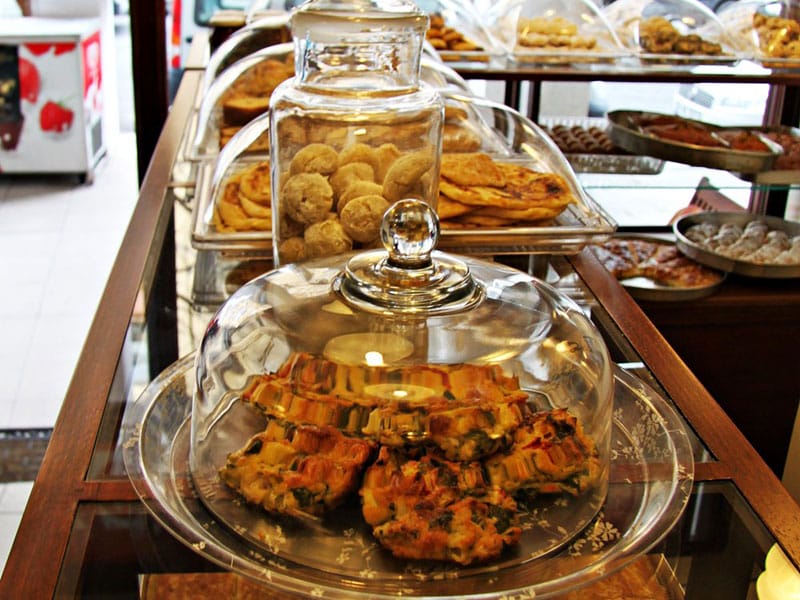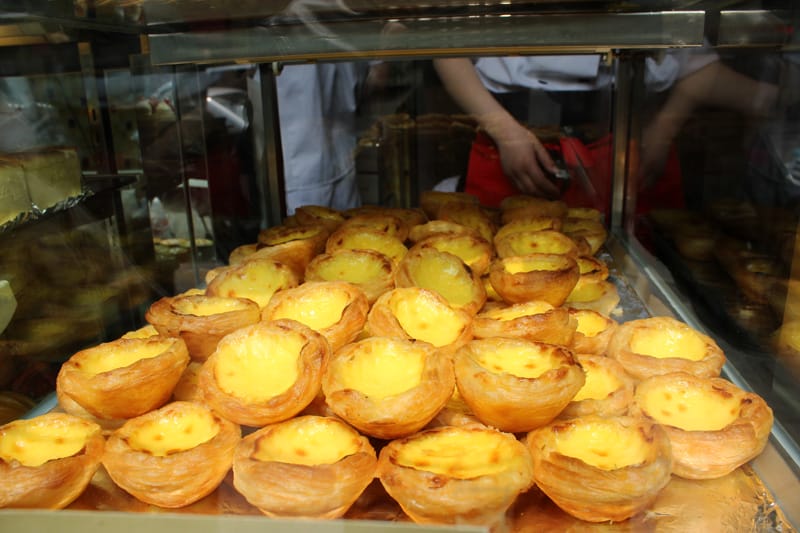Mid-Autumn Festival (中秋节, zhōngqiūjié) lands on the 15th day of the eighth lunar month, relatively near the autumnal equinox; in 2017, it falls on October 4 and coincides with the National Day holiday. Also sometimes called Mooncake Festival, it’s a public holiday in China and Taiwan on which families gather to give offerings to the full moon, float sky lanterns and eat mooncakes (月饼, yuèbing).
A culinary tradition with legendary roots, mooncakes are sold everywhere from grocery stores to five-star hotels and come with competing origin stories that relate how these sweets came to represent the holiday.
Mid-Autumn Festival was inspired by the mythical story of Chang’e, the “Lady of the Moon.” Once upon a time, the world had 10 suns, all of which lived in a mulberry bush together, and each day one sun would be drawn around the world in a carriage. But one day, all 10 suns took to the sky, and their heat destroyed the crops and set the earth on fire. To save the world, the archer Houyi shot nine of the suns down, and the emperor rewarded him with an immortality pill.
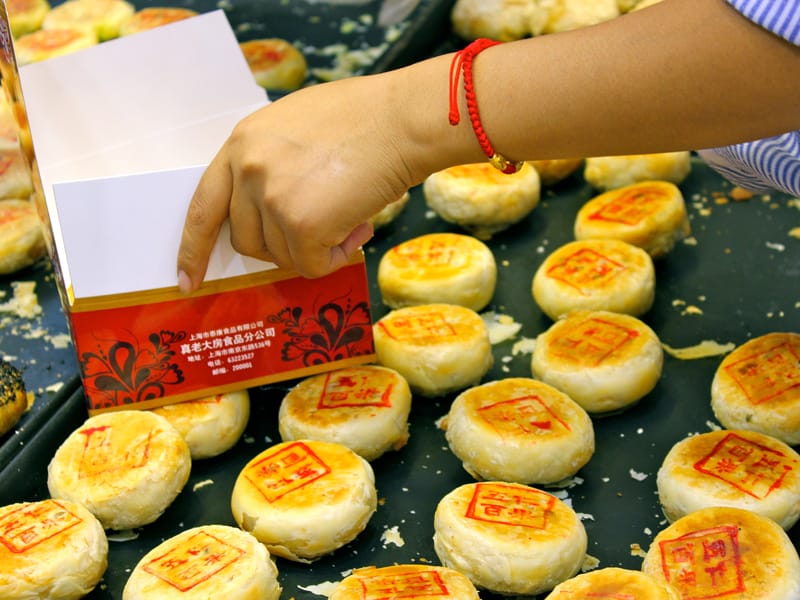
The legends differ on how Houyi’s wife, Chang’e, got the pill and consumed it, but one thing is certain: It made her fly. Houyi tried to chase her but was turned back by blustery winds. By then, Chang’e had landed on the moon, where she remains to this very day. By some trick of the gods, Houyi has found his own place in the sun, and each year on Mid-Autumn Festival, the husband and wife are reunited and the moon glows its brightest. Offerings to the moon and Chang’e are required that day, and over time the most popular contribution became the round mooncakes that reflect the beauty of the moon.
Other tales of how the mooncake became associated with Mid-Autumn Festival hearken back to the days of the Yuan Dynasty (1271–1368), when the Mongols ruled over the Han people. The barbarian leaders did not like the taste of mooncakes, so the military counselor of the Han people’s army, Liu Bowen, decided to furtively communicate with the people via the little sweets. To encourage people to eat them, he declared that the desserts held a medicine that would prevent the spread of a deadly plague. Bakers hid secret missives inside the round delicacies instructing the Chinese to overthrow the barbarians on Mid-Autumn Festival. The uprising was a success, and the Ming Dynasty ruled the land for the next 300 years.
Traditionally, the thin crust surrounds a rich filling, such as lotus-seed paste; other popular flavors include red bean paste and date paste. The pastes can take up to two weeks to prepare, so most families purchase their mooncakes at bakeries instead of making them at home. Salted egg yolks are often baked into the center of the cake to represent the moon, and mooncake molds bear each baker’s insignia.
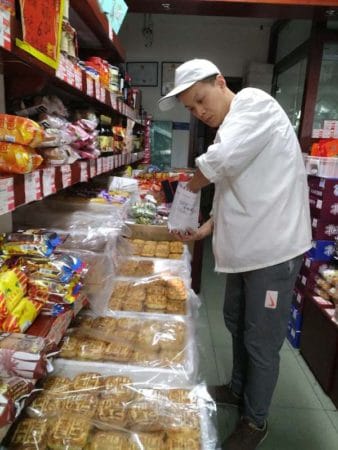 As the custom is brought into the 21st century, mooncakes are often given as gifts to family members and business associates, and it’s not unusual to receive many more boxes than one could possibly eat. The custom of gifting (and regifting) sumptuous boxes of lavishly flavored mooncakes has in fact become an essential part of doing business in China, garnering comparisons to Christmas fruitcake traditions.
As the custom is brought into the 21st century, mooncakes are often given as gifts to family members and business associates, and it’s not unusual to receive many more boxes than one could possibly eat. The custom of gifting (and regifting) sumptuous boxes of lavishly flavored mooncakes has in fact become an essential part of doing business in China, garnering comparisons to Christmas fruitcake traditions.
In modern times, variations on the filling have multiplied as gifting becomes more commonplace, and international companies have gotten in on the lucrative action. Starbucks has previously released coffee and pumpkin latte varieties, and Häagen-Dazs serves ice cream options. Five-star hotels go for extravagance, stuffing their mooncakes with abalone, shark fin, truffles or foie gras. Packaging has also become an essential aspect of the custom, with merchants offering everything from commemorative mooncake boxes that turn into wine carrying cases to feng shui-inspired cakes that come with iPhone cases and headsets for large orders.
While Mid-Autumn Festival is a time for family, it’s also an auspicious date for love, so it’s common to see couples tying the knot around the date. Mooncakes have even become a vehicle for romance, as hopeful grooms special-order cakes stuffed with a diamond ring and occasionally pure gold.
But be warned, these tiny sweets pack a hefty punch, with 800 calories per cake on average, making them one of the densest foods Chinese people consume. Recent trends have seen shops churning out low-sugar (or even no-sugar) mooncakes, but moderation is advised. Pairing them with bitter teas, like pu’er, is thought to help cut the sugar and oil. Or you can just try the time-honored diet trick of sharing. Families used to slice them into eight pieces to divide up the luck (and the calories) in the days before mooncake trading became an autumn pastime to grease palms and improve guanxi
Where to buy mooncakes in Shanghai:
Xing Hua Lou – 杏花楼
With almost a century of mooncake-making under their belts, Xing Hua Lou’s many locations are Shanghai’s top destinations during Mid-Autumn Festival. They’re so popular that scalpers sit outside the branches hawking counterfeit boxes bearing the store logo. This Cantonese restaurant originally opened in 1851 but didn’t start baking the holiday sweets until 1928. The menu has evolved into 20 flavors over the years, including the old standby: sweet lotus paste.

Zhen Lao Da Fang – 真老大房
One of Shanghai’s most famous pastry shops, Zhen Lao Da Fang has been serving Suzhou-style pork-stuffed pastries since 1899. The puffed buns have no fancy baker’s logo molded into the dough (merely a red stamp added later with food coloring) and sell for less than RMB 5 per cake, but they are a brand to reckon with all the same. Just check out the line down the block as the weather starts to cool. The Shanghainese know these savory sweets are best eaten hot!
Godly Vegetarian
Better known by locals as 功德林 or Gōngdélín, Godly Vegetarian is a chain of Buddhist restaurants that serves up meat-free (and meat-imitation) products. During Mid-Autumn Festival, their mooncakes are favored for their light flavors. Try passion fruit, black sesame or rose.
Strictly Cookies
Getting into the spirit of the holidays while also staying true to its name, Strictly Cookies is offering mooncake-cookies, or “mookies,” available for delivery or at their brick-and-mortar shop. Presented by the dozen in a red box, the six mouthwatering varieties include chocolate chip stuffed with a brownie, peanut butter with raspberry jam and purple potato with white chocolate. In a nod to tradition, they’ve also got a plain sugar cookie piped with red bean paste – a delicious primer for anyone looking to explore the local bean-heavy dessert scene.
Where to buy mooncakes in Beijing:
Bai Nian Yi Li – 百年义利
This Beijing ‘time-honored brand’ (老字号)has been bringing baked goods and snacks to local residents since 1906. They do a brisk business this time of year, but specialize mostly in fresh mooncakes as opposed to individually wrapped cakes or those presented in fancy gift boxes – perfect for grabbing a few to eat right away.
Dao Xiang Cun
Most Beijingers contend that this local bakery, established in 1895 and now with hundreds of locations, is the most famous one in the city. Stop in for a wide variety of sweets, but especially if you want to mix and match your individually wrapped mooncakes.
Editor’s note: This feature was originally published on September 14, 2012.
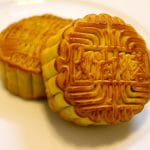 September 16, 2013 Assessing the State of the Mooncake
September 16, 2013 Assessing the State of the Mooncake
Shanghai’s hottest summer on record is officially behind us, which can mean only one […] Posted in Shanghai July 30, 2013 Bizim Ev
July 30, 2013 Bizim Ev
Editor’s note: This post was written by “Meliz,” an intrepid explorer of Istanbul’s […] Posted in Istanbul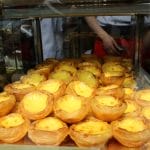 September 5, 2012 Lillian Cake Shop
September 5, 2012 Lillian Cake Shop
Confucius once said, “The superior man is modest in his speech, but exceeds in his […] Posted in Shanghai
Published on October 02, 2017
Related stories
September 16, 2013
ShanghaiShanghai’s hottest summer on record is officially behind us, which can mean only one thing: Mid-Autumn Festival is just around the corner. Zhōngqiū jié (中秋节) is that memorable time of year when Chinese people gift (and regift) bite-sized treats known as mooncakes (月饼, yuèbǐng). Last year, we wrote about the legend behind these treats, as…
July 30, 2013
IstanbulEditor’s note: This post was written by “Meliz,” an intrepid explorer of Istanbul’s culinary backstreets and frequent Istanbul guest contributor who would like to keep her anonymity. It all started with Laz böreği. It was not just any Laz böreği that showed up at the dinner party that evening, but perfect Laz böreği: layers of…
September 5, 2012
ShanghaiConfucius once said, “The superior man is modest in his speech, but exceeds in his actions.” He clearly never met a food writer, because superlatives and immodest speech are basically all we have to work with. But had Confucius opened a small patisserie, it would probably be Lillian Cake Shop. Lillian’s has a sign over…







































